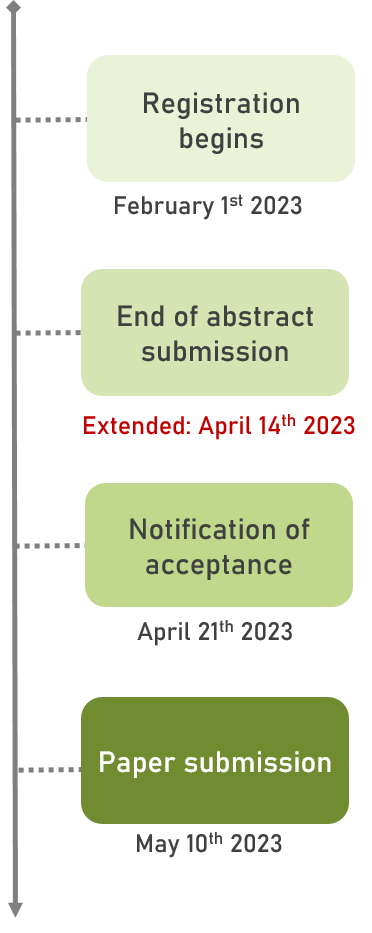













Thank you for attending ICBMB – presentations and materials are available in the “Program” section
ABOUT
Scientists, politicians, industrials, architects, and other experts will gather at the International Conference on Bioclimatic Materials and Buildings (ICBMB) to dive into innovative solutions, strategies and policies focusing on local bioclimatic approaches for more comfortable living situations, with lower carbon footprint buildings and an efficient energy demand for cooling and heating.
Most of these solutions and policies already exist and are just waiting to be evaluated, disseminated, and adapted to other regions. The conference will be held between May 3rd and 5th, 2023, in Ifrane-Morocco.
The ICBMB will focus on four main topics:
Policies for highly energy efficient buildings, adopting bioclimatic approach
Analysis of bioclimatic materials, construction practices & design
Indicators & weather files, as input for the design of buildings and districts
Bioclimatic buildings and districts: Case studies
ABOUT
Scientists, politicians, industrials, architects, and other experts will gather at the International Conference on Bioclimatic Materials and Buildings (ICBMB) to dive into innovative solutions, strategies and policies focusing on local bioclimatic approaches for more comfortable living situations, with lower carbon footprint buildings and an efficient energy demand for cooling and heating.
Most of these solutions and policies already exist and are just waiting to be evaluated, disseminated, and adapted to other regions. The conference will be held between May 3rd and 5th, 2023, in Ifrane-Morocco.
The ICBMB will focus on four main topics:
Policies for adopting the bioclimhighly energy- efficient buildings atic approach
Analysis of bioclimatic materials, construction practices & design
Indicators & weather files, as input for the design of buildings and districts
Bioclimatic buildings and districts: Case studies
DEADLINES

DEADLINES

CONTEXT
Buildings and construction sector are responsible for 38% of global energy-related CO2 emissions. Globally, governments are actively promoting and establishing new policies and strategies to mitigate the carbon footprint of the building sector. Scientists and researchers have oriented their efforts towards adopting new solutions using bioclimatic designs inspired by nature and traditional construction processes and designs. Other efforts are also seen in evaluating the new emerging policies and the development of various tools for energy efficiency simulations to support the thermal regulations developed by the concerned authorities.

Climate change is one of the most significant challenges of contemporary society. One of climate change’s primary outcomes is the global surface temperature increase of 1.09 °C from 1850-1900 to 2011-2020. The ongoing changes in air temperature and precipitation in different parts of the globe are impacting worldwide energy use, the economy, and human health. Climate change is expected to result in an increased frequency and intensity of hot extreme weather events affecting biodiversity, agriculture, water resources and energy systems.
In a growing world population resulting in higher energy consumption for heating and cooling purposes and increased CO2 emissions, a redesign of used bioclimatic construction materials and processes towards more efficient eco-friendly constructions became a necessity.
In Africa, self-building plays an essential role as an affordable and quick way to access shelter and property. Constructions carried out by a qualified company remain very limited. The sector is yet to be consolidated and structured in Africa. In Europe, the industrialization of the sector has boosted the standard-based production of components and, partly, of housing. Nevertheless, the aging housing stock requires energy-use renovation to meet the climate change challenges. Introducing Energy Efficiency (EE) measures is becoming necessary and, sometimes, an obligation. Since these EE measures cannot be implemented without an appropriate regulatory framework, it is crucial to analyse the existing regulatory and legal infrastructure.

This conference covers promising policies to promote highly comfortable buildings with minimal energy needs for heating and cooling. Experts will lead the discussions in the field to highlight key points which might be useful in developing and/or assessing policies.
Political Interventions
- Social housing needs, construction practices and urbanization unification, housing demand and supply situation.
- Infrastructure for the production of Bioclimatic Construction Materials.
- Promising effective policies to promote highly comfortable buildings with minimal energy need for heating and cooling.
- Case studies.
Research & Education
- Regulatory measures and training programs dealing with bioclimatic buildings
- Performance indicators and guidelines for XXI century bioclimatic buildings and districts.
- Indicators and weather files for future climate as input for the design of buildings and districts.
- Analysis of bioclimatic materials and construction practices
- Case studies.
Organised by

In partnership with:


